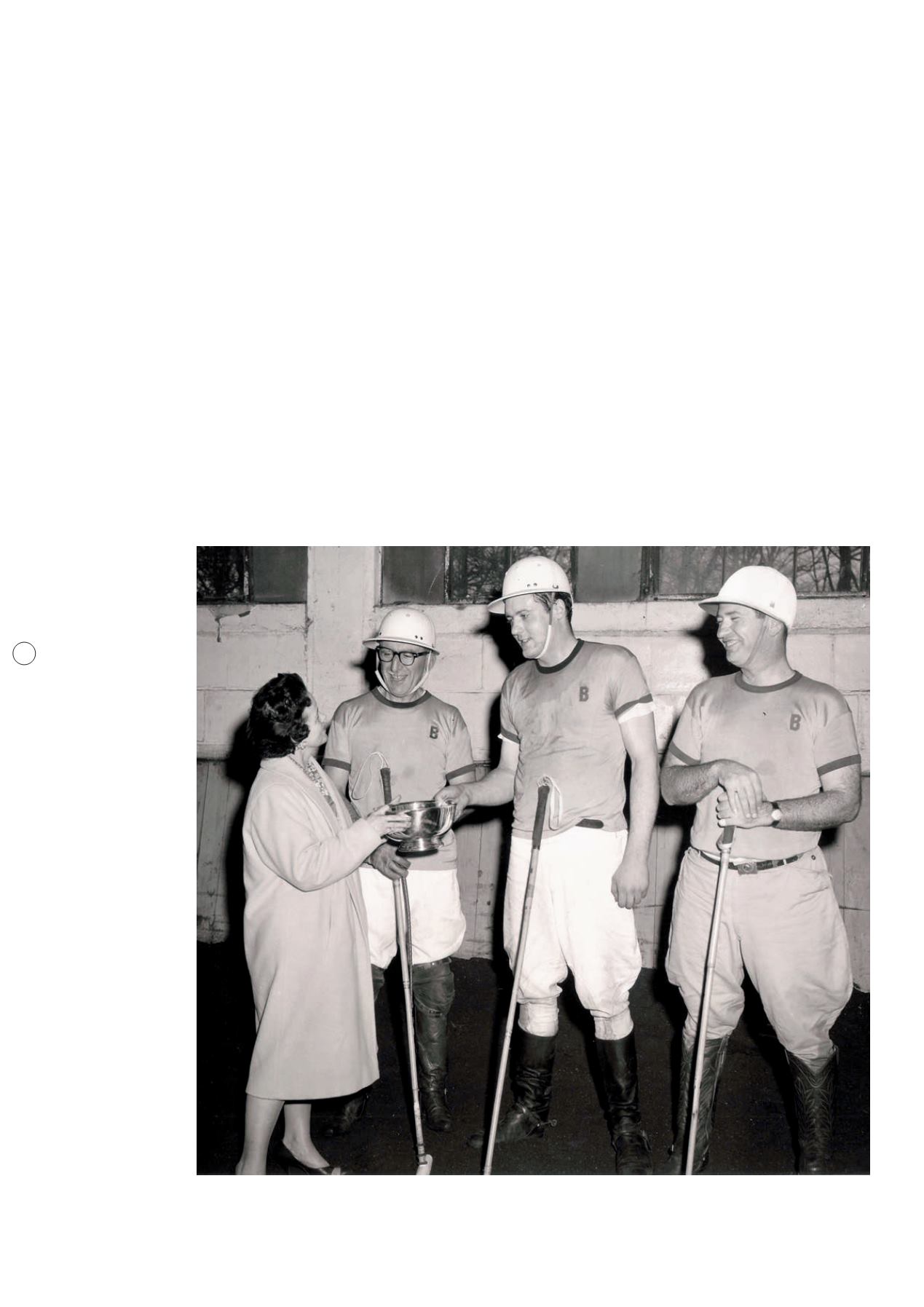
hurlinghampolo.com
32
M U S E U M O F P O LO
goals), and the Class D Championship (0-4
goals) trophy was presented by Walter P
Bliss. In 1926 Charles E Danforth gave the
association the Open Championship cup.
Following a 1921 Squadron A Armory
tournament that attracted 20 teams,
Townsend donated a cup to be played for
as an intercollegiate championship. Although
Harvard fielded the first collegiate indoor
polo team in 1883, the first recorded
intercollegiate indoor championship didn’t
take place until 1922, when Princeton’s
team of Edgar Stabler, Alton Hall and
William Fleming defeated Yale.
The indoor game was attracting
thousands of spectators who could watch
the galloping game up-close and personal.
of the ponies. The inflated leather arena ball
is larger than the hard plastic ball used in the
field, measuring 12.5”-15” in circumference.
Expert players take advantage of the boarded
sides as they careen passes to teammates,
driving the ball into the boards to send
them in the opposite direction, instead
of trying to turn them.
Following the end of the First World
War, the growth of Reserve Officers’
Training Corps units on campuses caused the
collegiate polo ranks to swell. In 1921 John R
Townsend presented the cup for the Class A
Championship (15+ goals). In 1923 Thomas L
Leeming put up the Class B Championship
cup (10-14 goals), Milton M Powell Jr offered
the Class C Championship trophy (5-9
Right
: Mrs George
Biddle with indoor
arena players George
Biddle, Frank Reilly Jr
and Johnny Casey
In 1924 there were 48 teams in the National
Championships of the Indoor Polo
Association, and 46 teams in 1925. And
in 1926 Winston Guest led his Yale team
to both the Indoor Polo Association’s Open
Championship, and to the intercollegiate
title as well.
By 1932 there were 52 indoor polo clubs
registered with the Indoor Polo Association,
and 53 teams took part in the 1934 National
Tournament, which saw the East (William
Reynolds, Winston FC Guest and Arthur
Bordon) beat the West in an epic battle.
The Great Depression of 1929-1939 had
a severe effect on the indoor game, with
competition reduced from four classes to just
two – the Senior Championship and Junior


